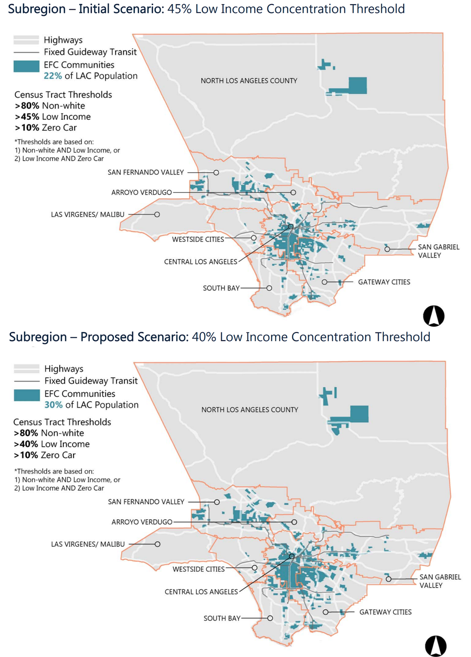
One year ago, Metro adopted an Equity Platform, in which the first step is to ‘Define and Measure’ where inequality of access to opportunity exists in L.A. County. Identifying inequalities could help prioritize future funding streams or transportation enhancements, but that direct connection to how dollars are spent hasn’t occurred yet. Rather than relying on CalEnviroScreen or other existing index tools, Metro decided to develop its own method that makes most sense in relation to transportation and Metro’s impact. Metro calls this approach Equity-Focused Communities (EFC). Over several months, an EFC working group looked at different demographic indicators to identify those which are most strongly correlated with inequitable outcomes. The three factors they landed on are:
Now it is time to decide where to set the concentration threshold levels for those three factors to capture more or less of the county population in these EFCs. See slides 16 & 17 of this presentation — Do you think the threshold should be higher (areas with 45% concentration of low-income households) to focus on a more targeted population (22% of LA County residents), or vice versa, allow for a lower threshold (40% of an area’s households are low-income) to include more of the population (30% of LA County residents)?